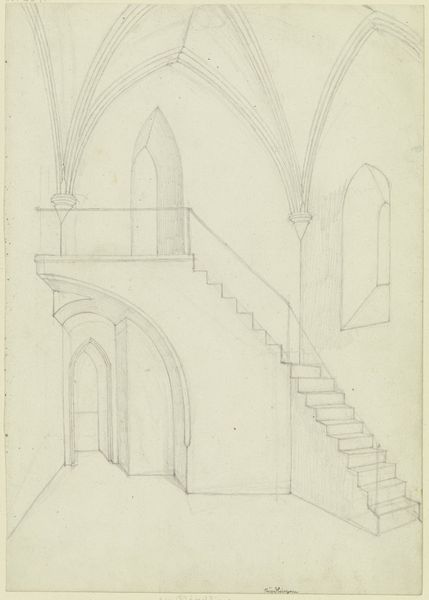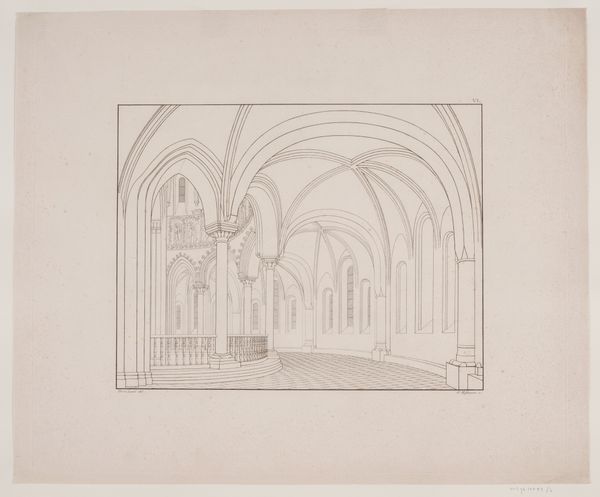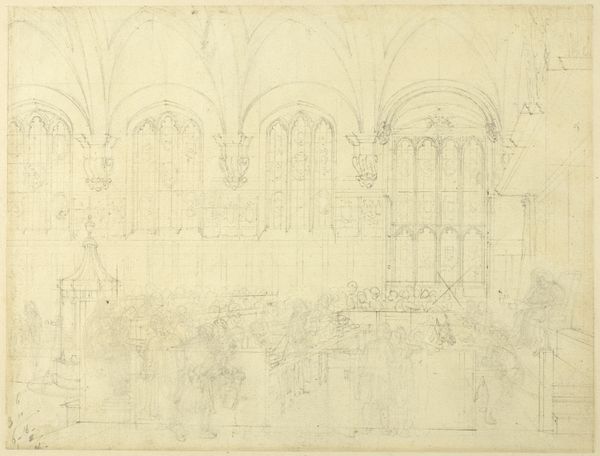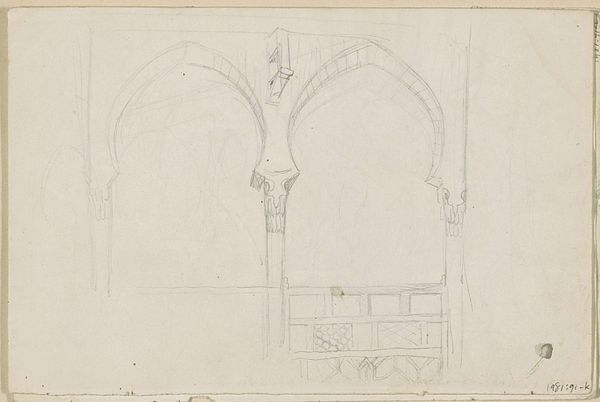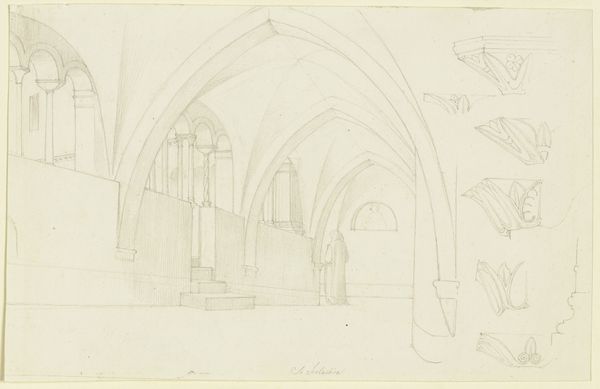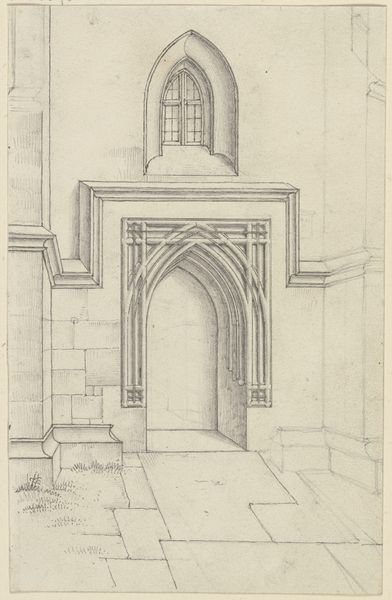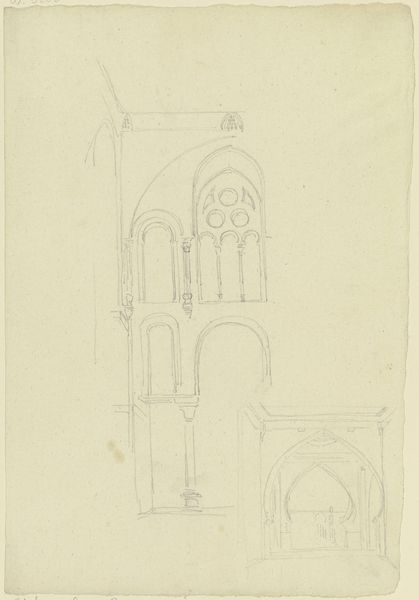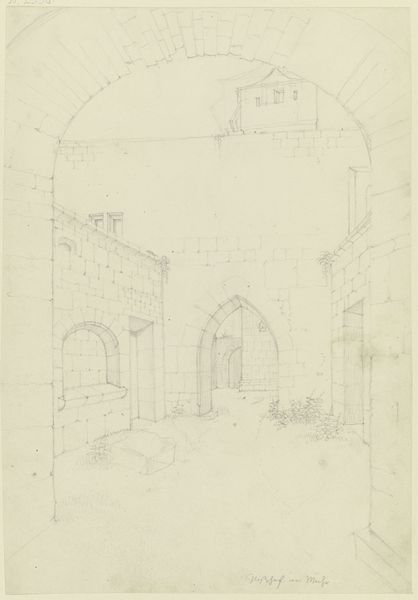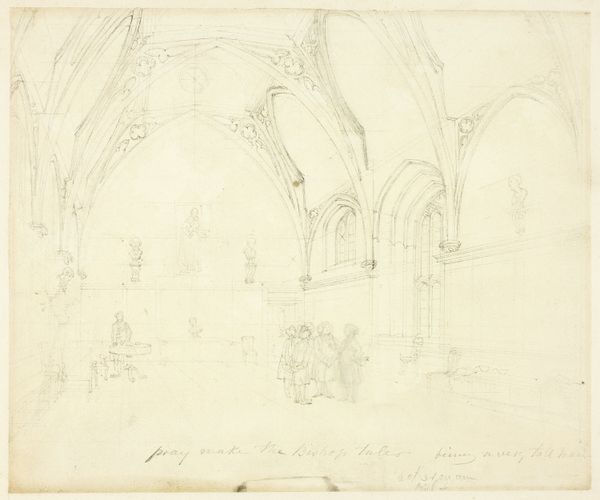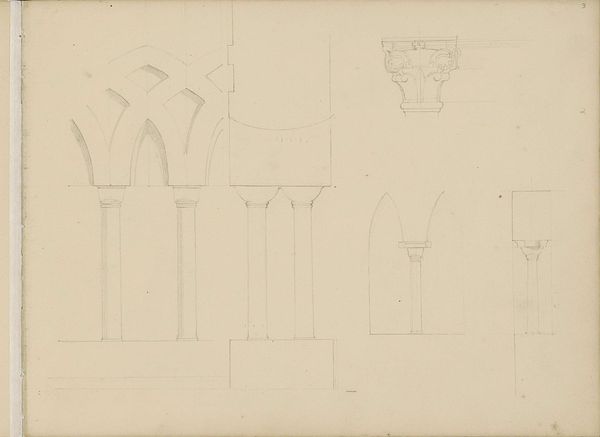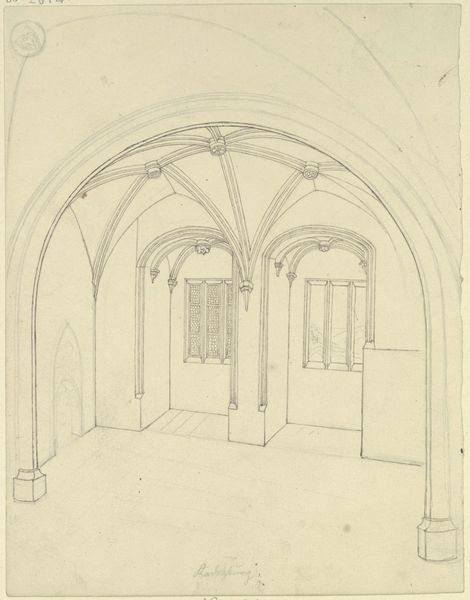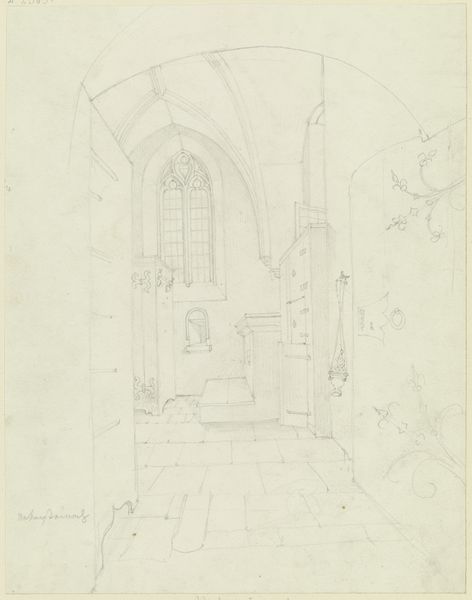
drawing, paper, pencil, architecture
#
drawing
#
16_19th-century
#
medieval
#
pencil sketch
#
paper
#
form
#
geometric
#
pencil
#
line
#
architecture
Copyright: Public Domain
Editor: Here we have Karl Ballenberger’s pencil drawing, "Entrance to a Gothic Church." It's…ethereal, almost weightless in its delicate rendering. There's a stark contrast between the detailed arches and the blank spaces, creating this serene and mysterious aura. What stands out to you as you view it? Curator: The 'aura', as you say, resonates! Ballenberger captures not just form, but the *feeling* of sacred space. He isn't simply sketching architecture; he’s composing a memory, perhaps. What's interesting is how unfinished it feels – does it hint at the fragmentation of faith or perhaps a new perspective on ruins, something of Romantic relic-hunting? Editor: That’s interesting…Romantic relic-hunting. It also feels like a stage set, or the bare bones of something greater to come. Did the architectural draftsmanship influence this artist’s other work? Curator: Undoubtedly. The obsession with line, with geometric forms – those were the artist's foundational blocks for understanding form and space, appearing even in the landscapes he rendered! Does the lack of figures impact your reading of it, do you think? Editor: Yes, their absence adds to the solemn and somewhat spooky quality of the drawing; maybe I like the incompleteness you mentioned. The artist seems focused on volume and interior space, leaving out humans who might inhabit the stage. Curator: Precisely! I’m now thinking: Ballenberger's drawing seems to point towards silence and something more. The drawing holds echoes of former, active spaces in its geometry. Editor: Exactly! It really highlights the quiet potential within those old stones, almost like a blueprint for ghosts! Curator: Ha! I am fond of that reflection: ‘blueprint for ghosts’ – perfectly stated, indeed.
Comments
No comments
Be the first to comment and join the conversation on the ultimate creative platform.
